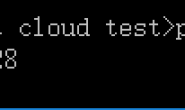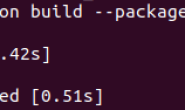大名鼎鼎的UNet和我们经常看到的编解码器模型,他们的模型都是先将数据下采样,也称为特征提取,然后再将下采样后的特征恢复回原来的维度。这个特征提取的过程我们称为“下采样”,这个恢复的过程我们称为“上采样”,本文就专注于神经网络中的下采样和上采样来进行一次总结。写的不好勿怪哈。


神经网络中的降维方法
池化层
池化层(平均池化层、最大池化层),卷积
平均池化层
- pytorch
nn.AvgPool1dnn.AvgPool2d
- tensorflow
- tf.layers.AveragePooling1D
- tf.layers.AveragePooling2D
最大池化层
- pytorch
- nn.MaxPool1d
- nn.MaxPool2d
- tensorflow
- tf.layers.MaxPooling1D
- tf.layers.MaxPooling2D
还有另外一些pool层:nn.LPPool、nn.AdaptiveMaxPool、nn.AdaptiveAvgPool、nn.FractionalMaxPool2d
卷积
普通卷积
- pytorch
nn.Conv1dnn.Conv2d
- tensorflow
- tf.layers.Conv1D
- tf.layers.Conv2D
还有一些独特的卷积,感兴趣的可以自己去了解
- 扩张卷积 (又称空洞卷积): tf.nn.atrous_conv2d
- depthwise卷积: tf.nn.depthwise_conv2d
- 分离卷积: tf.nn.separable_conv2d
- 量化卷积: tf.nn.quantized_conv2d
- …
升维方法
插值方法
插值方法有很多种有:阶梯插值、线性插值、三次样条插值等等
numpy的实现方法我在另外一篇文章中已经介绍过了,为了避免重复,想要了解的同学请移步【插值方法及python实现】
pytorch实现方法
torch.nn.Upsample(size=None, scale_factor=None, mode='nearest', align_corners=None)
对给定多通道的1维(时间)、2维(空间)、3维(体积)数据进行上采样。
- 1维(向量数据),输入数据Tensor格式为3维:(batch_size, channels, width)
- 2维(图像数据),输入数据Tensor格式为4维:(batch_size, channels, height, width)
- 3维(点云数据),输入数据Tensor格式为5维:(batch_size, channels, depth, height, width)
参数
- size:输入数据(一维 or 二维 or 三维)
- scale_factor:缩放大小
- mode:上采样算法(nearest(最近邻插值)、linear(线性插值)、bilinear(双线性插值)、bicubic(双三次插值)、trilinear(三次线性插值))
- align_corners:如果为True,则输入和输出张量的角像素对齐,从而保留这些像素处的值。 仅在模式为“线性”,“双线性”或“三线性”时有效。 默认值:False
返回:
-
Input:$(N, C, W_{in}), (N, C, H_{in}, W_{in}) 或(N, C, D_{in}, H_{in}, W_{in})$
-
Output: $(N, C, W_{out}), (N, C, H_{out}, W_{out}) 或(N, C, D_{out}, H_{out}, W_{out})$
$D_{out}=[D_{in}× \text{scale_factor}]$
$H_{out} = [H_{in} \times \text{scale_factor}]$
$W_{out} = [W_{in} \times \text{scale_factor}]$
unpooling
Unpooling是在CNN中常用的来表示max pooling的逆操作。这是从2013年纽约大学Matthew D. Zeiler和Rob Fergus发表的《Visualizing and Understanding Convolutional Networks》中产生的idea:鉴于max pooling不可逆,因此使用近似的方式来反转得到max pooling操作之前的原始情况
简单来说,记住做max pooling的时候的最大item的位置,比如一个3×3的矩阵,max pooling的size为2×2,stride为1,反卷积记住其位置,其余位置至为0就行:
$$\left[\begin{array}{lll}
1 & 2 & 3 \\
4 & 5 & 6 \\
7 & 8 & 9
\end{array}\right]->(\text { maxpooling })\left[\begin{array}{ll}
5 & 6 \\
8 & 9
\end{array}\right]->(\text { unpooling })\left[\begin{array}{lll}
0 & 0 & 0 \\
0 & 5 & 6 \\
0 & 8 & 9
\end{array}\right]$$
方法一

def unpool_with_with_argmax(pooled, ind, ksize=[1, 2, 2, 1]): """https://github.com/sangeet259/tensorflow_unpooling To unpool the tensor after max_pool_with_argmax. Argumnets: pooled: the max pooled output tensor ind: argmax indices , the second output of max_pool_with_argmax ksize: ksize should be the same as what you have used to pool Returns: unpooled: the tensor after unpooling Some points to keep in mind :: 1. In tensorflow the indices in argmax are flattened, so that a maximum value at position [b, y, x, c] becomes flattened index ((b * height + y) * width + x) * channels + c 2. Due to point 1, use broadcasting to appropriately place the values at their right locations ! """ # Get the the shape of the tensor in th form of a list input_shape = pooled.get_shape().as_list() # Determine the output shape output_shape = (input_shape[0], input_shape[1] * ksize[1], input_shape[2] * ksize[2], input_shape[3]) # Ceshape into one giant tensor for better workability pooled_ = tf.reshape(pooled, [input_shape[0] * input_shape[1] * input_shape[2] * input_shape[3]]) # The indices in argmax are flattened, so that a maximum value at position [b, y, x, c] becomes flattened index ((b * height + y) * width + x) * channels + c # Create a single unit extended cuboid of length bath_size populating it with continous natural number from zero to batch_size batch_range = tf.reshape(tf.range(output_shape[0], dtype=ind.dtype), shape=[input_shape[0], 1, 1, 1]) b = tf.ones_like(ind) * batch_range b_ = tf.reshape(b, [input_shape[0] * input_shape[1] * input_shape[2] * input_shape[3], 1]) ind_ = tf.reshape(ind, [input_shape[0] * input_shape[1] * input_shape[2] * input_shape[3], 1]) ind_ = tf.concat([b_, ind_], 1) ref = tf.Variable(tf.zeros([output_shape[0], output_shape[1] * output_shape[2] * output_shape[3]])) # Update the sparse matrix with the pooled values , it is a batch wise operation unpooled_ = tf.scatter_nd_update(ref, ind_, pooled_) # Reshape the vector to get the final result unpooled = tf.reshape(unpooled_, [output_shape[0], output_shape[1], output_shape[2], output_shape[3]]) return unpooled original_tensor = tf.random_uniform([1, 4, 4, 3], maxval=100, dtype='float32', seed=2) pooled_tensor, max_indices = tf.nn.max_pool_with_argmax(original_tensor, ksize=[1, 2, 2, 1], strides=[1, 2, 2, 1], padding='SAME') print(pooled_tensor.shape) # (1, 2, 2, 3) unpooled_tensor = unpool_with_with_argmax(pooled_tensor, max_indices) print(unpooled_tensor.shape) # (1, 4, 4, 3)
View Code
方法二

from tensorflow.python.ops import gen_nn_ops inputs = tf.get_variable(name="a", shape=[64, 32, 32, 4], dtype=tf.float32, initializer=tf.random_normal_initializer(mean=0, stddev=1)) # 最大池化 pool1 = tf.nn.max_pool(inputs, ksize=[1, 2, 2, 1], strides=[1, 2, 2, 1], padding='SAME') print(pool1.shape) # (64, 16, 16, 4) # 最大反池化 grad = gen_nn_ops.max_pool_grad(inputs, # 池化前的tensor,即max pool的输入 pool1, # 池化后的tensor,即max pool 的输出 pool1, # 需要进行反池化操作的tensor,可以是任意shape和pool1一样的tensor ksize=[1, 2, 2, 1], strides=[1, 2, 2, 1], padding='SAME') print(grad.shape) # (64, 32, 32, 4)
View Code
在tensorflow 2.4版本中官方已经帮我们实现好了
tf.keras.layers.UpSampling2D(size=(2, 2), data_format=None, interpolation='nearest')
pytorch版本
nn.MaxUnpool1dnn.MaxUnpool2d
转置卷积
转置卷积 (transpose convolution) 也会被称为 反卷积(Deconvolution),与Unpooling不同,使用反卷积来对图像进行上采样是可以习得的。通常用来对卷积层的结果进行上采样,使其回到原始图片的分辨率。
- pytorch
nn.ConvTranspose1d(in_channels=N, out_channels=2N, kernel_size=2*S, stride=S, padding=S//2 + S%2, otuput_padding=S%2)nn.ConvTranspose2d
- tensorflow
- tf.nn.conv2d_transpose
- tf.nn.conv1d_transpose
PixelShuffle

pixelshuffle算法的实现流程如上图,其实现的功能是:将一个[H, W]的低分辨率输入图像(Low Resolution),通过Sub-pixel操作将其变为[r*H, e*W]的高分辨率图像(High Resolution)。
但是其实现过程不是直接通过插值等方式产生这个高分辨率图像,而是通过卷积先得到$r^2$个通道的特征图(特征图大小和输入低分辨率图像一致),然后通过周期筛选(periodic shuffing)的方法得到这个高分辨率的图像,其中$r$为上采样因子(upscaling factor),也就是图像的扩大倍率。
二维SubPixel上采样
[batch, height, width, channels * r * r] –> [batch, height * r, width * r, channels]
tensorflow方法实现

import tensorflow as tf def _phase_shift(I, r): # 相位偏移操作 bsize, a, b, c = I.get_shape().as_list() bsize = tf.shape(I)[0] # Handling Dimension(None) type for undefined batch dim X = tf.reshape(I, (bsize, a, b, r, r)) X = tf.transpose(X, (0, 1, 2, 4, 3)) # bsize, a, b, 1, 1 X = tf.split(X, a, 1) # a, [bsize, b, r, r] X = tf.concat([tf.squeeze(x, axis=1) for x in X], axis=2) # bsize, b, a*r, r X = tf.split(X, b, 1) # b, [bsize, a*r, r] X = tf.concat([tf.squeeze(x, axis=1) for x in X], axis=2) # bsize, a*r, b*r return tf.reshape(X, (bsize, a * r, b * r, 1)) def PixelShuffle(X, r, color=False): if color: Xc = tf.split(X, 3, 3) X = tf.concat([_phase_shift(x, r) for x in Xc], axis=3) else: X = _phase_shift(X, r) return X if __name__ == "__main__": X1 = tf.get_variable(name='X1', shape=[2, 8, 8, 4], initializer=tf.random_normal_initializer(stddev=1.0), dtype=tf.float32) Y = PixelShuffle(X1, 2) print(Y.shape) # (2, 16, 16, 1) X2 = tf.get_variable(name='X2', shape=[2, 8, 8, 4 * 3], initializer=tf.random_normal_initializer(stddev=1.0), dtype=tf.float32) Y2 = PixelShuffle(X2, 2, color=True) print(Y2.shape) # (2, 16, 16, 3)
View Code
pytorch方法实现

import torch import torch.nn as nn input = torch.randn(size=(1, 9, 4, 4)) ps = nn.PixelShuffle(3) output = ps(input) print(output.size()) # torch.Size([1, 1, 12, 12])
View Code
numpy方法实现

def PS(I, r): assert len(I.shape) == 3 assert r>0 r = int(r) O = np.zeros((I.shape[0]*r, I.shape[1]*r, I.shape[2]/(r*2))) for x in range(O.shape[0]): for y in range(O.shape[1]): for c in range(O.shape[2]): c += 1 a = np.floor(x/r).astype("int") b = np.floor(y/r).astype("int") d = c*r*(y%r) + c*(x%r) print a, b, d O[x, y, c-1] = I[a, b, d] return O
View Code
一维SubPixel上采样
(batch_size, width, channels * r)–>(batch_size, width * r, channels)
tensorflow实现

import tensorflow as tf def SubPixel1D(I, r): """一维subpixel upsampling layer, 输入维度(batch, width, r). """ with tf.name_scope('subpixel'): X = tf.transpose(I, [2, 1, 0]) # (r, w, b) X = tf.batch_to_space_nd(X, [r], [[0, 0]]) # (1, r*w, b) X = tf.transpose(X, [2, 1, 0]) return X # 示例 # --------------------------------------------------- if __name__ == "__main__": inputs = tf.get_variable(name='input', shape=[64, 8192, 32], initializer=tf.random_normal_initializer(stddev=1.0), dtype=tf.float32) upsample_SubPixel1D = SubPixel1D(I=inputs, r=2) print(upsample_SubPixel1D.shape) # (64, 16384, 16)
View Code
pytorch方法实现

class PixelShuffle1D(nn.Module): """ 1D pixel shuffler. https://arxiv.org/pdf/1609.05158.pdf Upscales sample length, downscales channel length "short" is input, "long" is output """ def __init__(self, upscale_factor): super(PixelShuffle1D, self).__init__() self.upscale_factor = upscale_factor def forward(self, x): batch_size, channels, in_width = x.size() channels //= self.upscale_factor out_width = self.upscale_factor * in_width x = x.contiguous().view([batch_size, channels, self.upscale_factor, in_width]) x = x.permute(0, 1, 3, 2).contiguous() x = x.view(batch_size, channels, out_width) return x
View Code
sub-pixel or fractional convolution可以看成是transposed convolution的一个特例
Meta upscale module
可以任意上采样尺寸,还不是很出名,等于后出名了再来补全
参考
这里很多API我还是分享的tensorflow 1.*的,主要原因是因为我最开始学深度学习的时候用的是 tensoflow 1,现在我已经转学pytorch了,今天看了看tensorflow,2版本已经发布一年多了,1版本相当于是烂尾了,2版本虽然解决了原来的问题,可是人是向前看的,我已经使用pytorch起来,再让我回头学tensorflow 2似乎是一件很不情愿的事情。而且tensorflow 2 已经在走向没落了,使用tensorflow 2的开源代码,除了google自家公司外,真的也越来越少。tensorflow加油吧,我内心深处还是喜欢你的,只不过pytorch太方便了,开源社区也很强大了。
【文档】tensorflow官方文档
【文档】pytorch官方文档
【代码】2D_subpixel
【代码】1D_pytorch-pixelshuffle1d
【代码】1D_pytorch_pixelshuffle
【论文】《Real-Time Single Image and Video Super-Resolution Using an Efficient Sub-Pixel Convolutional Neural Network》
【动图】卷积的动画





